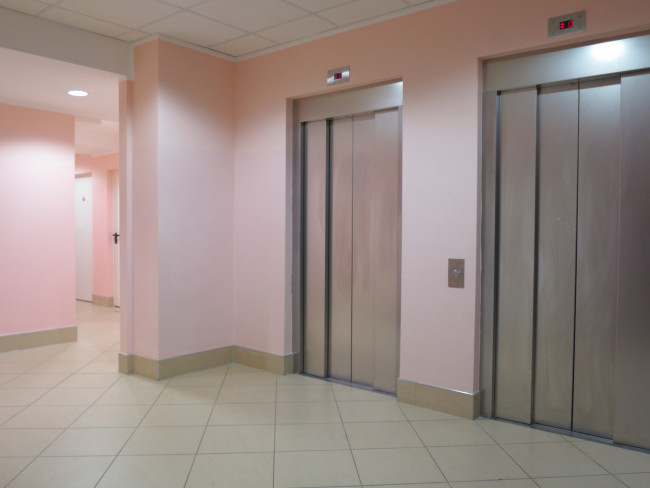- The hour-long discussion covered a wide range of key intel for boards looking to keep a lid on costs
- Mark Levine of property management firm EBMG says insurance costs are rising by 20 to 30 percent

NYC buildings are grappling with increases in costs for water, property taxes, utilities, and insurance.
iStock
It’s tougher than ever to run a co-op or condo building in New York City as a result of inflation, rising labor costs, new regulations, insurance premium increases, and record-high interest rates. How can you plan a budget with so many different costs to forecast in the year to come?
With budgeting season underway, Brick Underground founder and publisher Teri Rogers on Wednesday joined Lindsay Liu, co-founder and CEO of Super, a property management platform, to co-host a budget-planning webinar featuring Mark Levine, principal of property management firm EBMG, which oversees the operations of over 100 NYC co-op, condominium, and rental buildings.
The hour-long discussion covered a wide range of key intel for boards looking to keep a lid on costs. Here’s a recap in case you missed it.
When should co-op and condo boards start planning a budget?
Most buildings follow the calendar year and they or their management company start creating a budget in late September and October, Levine said. The goal is to have it approved by early November, which would provide owners and shareholders 30-days’ notice of any increases taking effect January 1st.
If a building is working with a management company for the first time and there isn’t a full year of data to reference, Levine explains their practice is to take the prior year’s audited financials, plus the previous managing agent’s numbers, to create a draft budget.
What are the fixed and variable costs boards need to consider?
Fixed costs are expenses that you can identify and are easier to plan around. These include things like management fees, accountant fees, real estate taxes, elevator and boiler service contracts.
For variable costs, “you use your best guess,” Levine said. That’s because some are affected by usage and others are due to market conditions, like the cost of fuel. Another example may be repairs outside the scope of service agreements, so you may want to anticipate the cost for components that are aging.
Is it worth locking in a price for energy?
Because prices fluctuate for gas, electric, and oil, Levine says locking in a price with a trusted provider is a smart move. This way you can “predict what your overall cost will be, based on past usage of kilowatt hours, therms, or gallons," he said.
He did caution boards to watch out for contracts with energy service companies because “they tend to auto-renew at much higher rates." When working with a new building, he said, "this is the first thing that we review and we tend to find more expired contracts than not,” he said.
He’s keeping an eye on ConEd’s rising prices: Fuel oil is down about $.50 since this time last year, but ConEd increased gas and electric delivery by 14 percent after a 14 percent increase last year. Next year they’re asking for another 18 percent increase.
“With the uncertainty in the Middle East right now, we don’t know where it’s going to go,” he said.
Should you review your budget at other times during the year?
Boards should have the capability, through their managing agent, to review their base financials at least monthly, Levine said.
In each management report, you should receive a statement showing income and expenses on a monthly and yearly basis. You’ll also be able to get a good sense of the current cash balances in all accounts, open arrears, open payables and see copies of all invoices paid that match up to the check register, he adds.
“We always recommend that the boards do at least a mid-year review to see what the next six months may bring. By being diligent over that six-month period, we can make any mid-year adjustments that are needed and may be able to minimize any surprising increases down the road,” he adds.
How much can boards expect costs to rise in the new year?
It’s a very tough environment for NYC buildings as a result of rising costs. Across EBMG's portfolio of buildings, they are seeing water and sewer costs rise close to 4.5 percent, property taxes about 8 percent, utilities up 5-10 percent, and insurance coverage increasing by 15-25 percent. Even the cost of everyday supplies, such as snow melt, have nearly doubled over the last two years.
NYC buildings are also grappling with new regulations that require additional inspections, and costly compliance, such as Local Law 11 and Local Law 97.
Salaries are also going up, and for buildings that pay prevailing wage, the 2024 minimums begin at about $28 and hour for a porter; $31 an hour for a handyperson; and more for a superintendent. Prevailing wage not only applies to salaried employees, it can also be required for vendors and service providers who do work in the building, such as security companies, concierges, repair companies, Levine said.
Should non-union buildings avoid paying prevailing wage?
Some buildings choose not to pay prevailing wage and take the resulting hit on their taxes, Liu pointed out.
Levine responded that this is an issue for non-union or exempt buildings since union buildings are assumed to be paying prevailing wages. Exempt factors include an average assessed value of $60,000 or less per apartment. For buildings that have fewer than 30 units, the exemption is based on an average assessed value of less than $100,000.
“Once you get to that magic number of 30 units, you are going to be making this tough decision,” Levine says.
Buildings that don’t pay prevailing wage forfeit the yearly tax abatement that is distributed to shareholders or owners.
A lot depends on how many units are owner occupied, Levine said.
Buildings where many owners lease their units out may not wish to pay the higher wages to the staff, he explained. “Co-ops that limit subleasing and have more primary residents who would be eligible may do the math and figure that it’s a win/win. Staff gets a better living wage, and they can benefit from the abatement,” he said.
What can buildings do about rising insurance costs?
Insurance premiums are rising for a variety of reasons and climate-related coverage is only part of the cause, Levine said.
“We’re seeing a variety of buildings showing an increase of 20 to 30 percent year over year for general coverages and once you get to the umbrella coverages, those have constricted even further,” he said.
Increasingly, insurance companies are not permitting buildings to hire vendors who do not carry enough insurance.
“This is making it more expensive for even the smallest job because it’s knocking out the bottom-priced vendors who do good work. The building may see smaller projects at least double in price,” Levine said.
He offered the following suggestions: Keep your building clear of violations. Some carriers are now using open violations as a way to avoid providing coverage or even deny policies.
Another tip: while shopping around for better packages and policies is good practice, don't do it every single year. Insurance companies are incentivized to have long-term relationships, and if they see a property that is a " frequent shopper" and switch their policy every year or two, they may start to decline coverage, making it even harder to negotiate.
Another recommendation: Don’t skimp on Directors and Officers policies, which can protect you from lawsuits while making good faith business decisions.
How do buildings avoid Local Law 97 fines?
Buildings that do not comply with Local Law 97 face fines starting in 2025. Buildings over 25,000 square feet will be fined $268 per ton of CO2 over the limit. The city estimates that 25 percent of buildings will fail to meet the new emissions limits set for 2024, Rogers pointed out.
Levine countered by saying for most NYC buildings, there is not a huge risk of penalties for the first tier of carbon emission reductions required in 2024.
Owners and boards that prove they are making a "good faith effort" to comply with emission cuts can get a reduction in penalties.
A good faith effort, Levine explained, involves hiring a company to conduct a review, as well as having an actionable decarbonization plan in place, the right professionals engaged, financial plans, and a timetable with a clear path toward completion.
“Because the law is new and things are shifting, buildings should continue to watch out for how the city updates monitoring and regulation for Local Law 97,” he said. A delay in compliance may mean the building is not eligible for renewable energy credits to offset their carbon emissions.
“So these trade-offs should be weighed for buildings that need more time to comply. Even though some respite is being offered, the city wants to see clear plans in motion. Best to start now to get more time on your side,” he added.
Should buildings challenge their tax bill?
Levine says it's always worth it to always petition your tax assessment. You can use a tax certiorari firm that will go to court and plead on behalf of your building to attempt mediation to lower your property taxes. There's a small filing fee of about $100.
These firms work on a contingency basis, so they are motivated to save you as much as they can. Results vary and don’t work every year, but having this as part of your routine is a worthy investment, he said. Typical contingency fees are 15 to 25 of what they save you, depending on the firm.
You Might Also Like
Sign Up for our Boards & Buildings Newsletter (Coming Soon!)
Thank you for your interest in our newsletter. You have been successfully added to our mailing list and will receive it when it becomes available.























